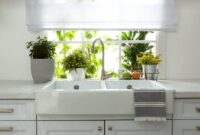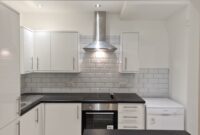Best kitchen worktops for UK homes: Choosing the right worktops can completely transform your kitchen, impacting both its functionality and aesthetic appeal. From the durability of granite to the sleek modernity of quartz, the options available can be overwhelming. This guide navigates the complexities of choosing the perfect worktop, considering factors like budget, lifestyle, and desired style to help you make an informed decision for your UK home.
We’ll explore the most popular materials – granite, quartz, laminate, wood, and solid surface – comparing their pros and cons in terms of cost, maintenance, durability, and aesthetic versatility. We’ll also delve into practical considerations like kitchen size, family needs, and the overall style you’re aiming for, ensuring your chosen worktop complements your kitchen perfectly. Get ready to discover the ideal surface for your culinary creations!
Popular Kitchen Worktop Materials in the UK
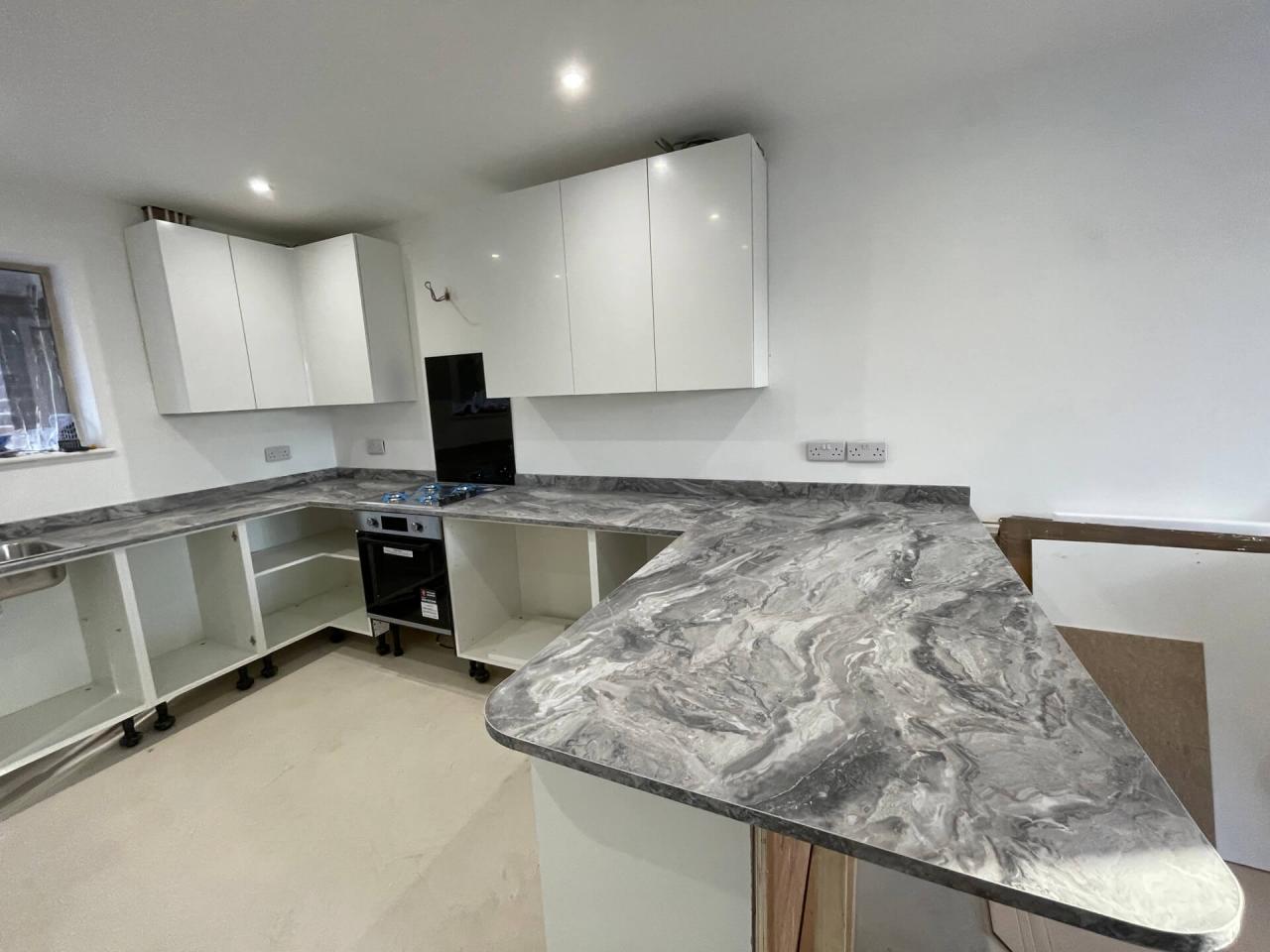
Source: co.uk
Choosing the right worktop material is a crucial decision when renovating or designing a kitchen. The material you select will significantly impact the look, feel, and longevity of your kitchen, so understanding the pros and cons of each popular option is vital. This section will explore five of the most popular kitchen worktop materials in the UK: granite, quartz, laminate, wood, and solid surface.
Comparison of Popular Kitchen Worktop Materials
The table below provides a concise comparison of the five most popular worktop materials, considering cost, durability, maintenance requirements, and aesthetic appeal. Remember that pricing can vary significantly depending on factors such as supplier, quality, and installation costs.
| Material | Cost (Approximate Range) | Durability | Maintenance | Aesthetic Appeal |
|---|---|---|---|---|
| Granite | £400-£1000 per m² | High; very resistant to scratches and heat | Relatively low maintenance; occasional sealing required | Highly versatile; wide range of colours and patterns |
| Quartz | £300-£800 per m² | High; very resistant to scratches, stains, and heat | Low maintenance; wipe clean | Wide range of colours and patterns, often mimicking natural stone |
| Laminate | £50-£200 per m² | Medium; susceptible to scratches and heat damage | Low maintenance; wipe clean | Wide range of colours and styles, but can look less natural |
| Wood | £200-£600 per m² | Medium; susceptible to scratches, heat damage, and water damage if not properly sealed | High maintenance; regular oiling or sealing required | Warm and natural aesthetic; various wood types and finishes available |
| Solid Surface | £300-£700 per m² | Medium-High; resistant to stains and scratches, but can be damaged by excessive heat | Medium maintenance; regular cleaning required | Seamless appearance; variety of colours and finishes available |
Granite Worktops
Granite is a natural stone known for its durability and stunning aesthetic appeal. Its high density makes it highly resistant to scratches and heat, although sudden extreme temperature changes can cause cracking. Granite is relatively low maintenance, requiring only occasional sealing to prevent staining. The colour variations and patterns within each slab are unique, offering a wide range of styles from subtle greys to dramatic blacks and reds with veining.
Quartz Worktops
Engineered quartz worktops are a popular choice due to their exceptional durability and low maintenance. Made from a mixture of natural quartz and resin, they are highly resistant to scratches, stains, and heat. Their non-porous surface makes them incredibly easy to clean; a simple wipe-down is usually sufficient. Quartz offers a vast array of colours and patterns, including those mimicking the look of natural stone, but with greater consistency and less variation between slabs.
Laminate Worktops
Laminate worktops are a budget-friendly option offering a wide variety of colours and styles. However, they are less durable than natural stone or engineered quartz, being susceptible to scratches and heat damage. They are relatively easy to clean, but scratches and burns are difficult to repair. The range of colours and finishes is vast, offering everything from simple solid colours to wood-grain and stone-effect patterns.
Wood Worktops
Wood worktops bring a warm and natural aesthetic to the kitchen. Popular choices include oak, walnut, and beech. However, wood is more susceptible to scratches, heat damage, and water damage than other materials. Regular oiling or sealing is crucial to protect the wood and prevent staining. The natural variations in colour and grain pattern create a unique and rustic look.
Solid Surface Worktops
Solid surface worktops are a non-porous material made from a blend of acrylic resin and mineral fillers. This makes them resistant to stains and scratches. They are also relatively heat resistant, though extreme heat can cause damage. Seamless joins are possible, creating a sleek, modern look. The range of colours and finishes is extensive, offering a wide variety of styles to suit any kitchen design.
Factors Influencing Worktop Choice
Choosing the right kitchen worktop is a significant decision, impacting both the aesthetics and functionality of your kitchen for years to come. Many factors beyond just material preference play a crucial role in this choice, ensuring the final selection is both stylish and practical for your specific needs and lifestyle. Careful consideration of these factors will lead to a more satisfying and long-lasting kitchen worktop.
Kitchen Size and Layout’s Influence on Worktop Material Selection
The dimensions and layout of your kitchen significantly influence worktop material selection. Smaller kitchens benefit from lighter-coloured worktops that create a sense of spaciousness. Darker colours, while stylish, can make a compact kitchen feel even smaller. Similarly, the layout dictates the worktop’s shape and size. A galley kitchen might require a continuous run of worktops, favouring materials that are easy to maintain and durable over a long length.
A larger kitchen with an island, on the other hand, offers more flexibility in material choice, potentially allowing for a combination of materials for visual interest and functional zoning. For example, a durable material like quartz might be chosen for the main work area, while a more stylish but potentially less durable material like marble could be used on the island.
Worktop Material Suitability for Different Kitchen Styles
Different materials lend themselves to various kitchen styles. Modern kitchens often feature sleek, minimalist designs, making quartz or laminate excellent choices due to their seamless appearance and easy maintenance. Traditional kitchens, with their ornate details and warm tones, might pair well with butcher block or granite worktops, adding a touch of rustic charm and durability. Rustic kitchens, emphasizing natural elements, benefit from the organic look of wood or stone worktops, contributing to the overall homely and inviting atmosphere.
For instance, a farmhouse-style kitchen might feature a thick, reclaimed wood worktop, while a contemporary kitchen might opt for a polished concrete worktop for a stark, industrial look.
Choosing the best kitchen worktops for UK homes involves considering durability and easy cleaning. Maintaining hygiene is key, and you can learn valuable tips from exploring best practices for maintaining a German kitchen’s hygiene , which often emphasizes robust materials. This knowledge will help you select worktops that are both stylish and easy to keep spotless in your own UK kitchen.
Considerations for Families with Young Children or Pets
Families with young children or pets require worktops that are both durable and easy to clean. Materials like quartz and laminate are highly resistant to scratches and stains, making them ideal choices for high-traffic areas. Avoid materials that are easily chipped or porous, as these can harbour bacteria and are difficult to clean thoroughly. Furthermore, consider the worktop’s edge profile; a rounded edge minimizes the risk of injury for small children.
The material’s heat resistance is another crucial factor; materials that can withstand hot pans directly placed on the surface prevent accidental damage. For example, a family with young children might prioritize a seamless quartz worktop to prevent bacteria buildup and accidental injuries, whereas a family with pets might prefer a durable granite worktop that resists scratches from playful paws.
Worktop Installation and Maintenance: Best Kitchen Worktops For UK Homes
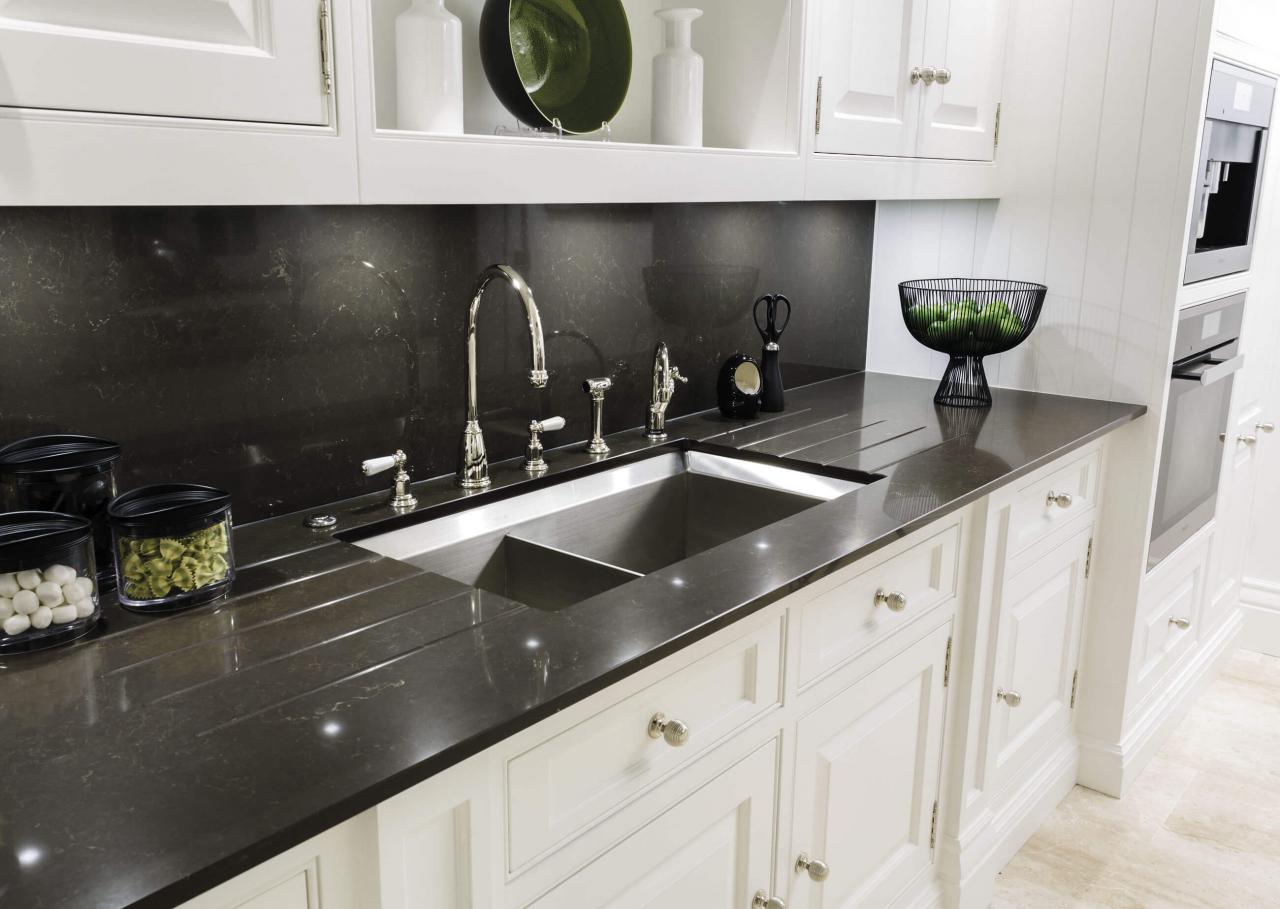
Source: co.uk
Getting your new kitchen worktops installed and keeping them looking their best requires a bit of know-how. The installation process varies depending on the material, and proper maintenance is key to extending their lifespan. This section will cover both aspects, offering guidance for a variety of popular worktop choices.
Worktop installation is best left to professionals, especially for complex designs or delicate materials like natural stone. However, understanding the general process can help you oversee the installation and ensure a smooth process. For simpler installations, like laminate worktops, DIY is possible with careful planning and the right tools.
Laminate Worktop Installation
Laminate worktops are relatively easy to install. The process typically involves accurate measurements, cutting the worktop to size (using a circular saw with a fine-tooth blade), applying sealant to the edges, and securing the worktop to the base units using appropriate fixings. Accurate measurements are crucial to avoid issues with fitting around sinks and appliances. A professional finish often involves careful attention to detail in trimming and sealing the edges to prevent water damage.
Granite and Quartz Worktop Installation
Natural stone worktops, such as granite and quartz, require more expertise to install. These materials are heavy and require precise cutting and polishing to achieve a seamless finish. The installation process usually involves templating (taking precise measurements), cutting the stone to the template, polishing the edges, and finally securing the worktop to the cabinets using specialized adhesives and clamps.
Any imperfections in the cutting or fitting can be easily noticeable, highlighting the need for skilled professionals.
Wood Worktop Installation
Wood worktops, like butcher block, require careful preparation and installation. The wood needs to be properly sealed before installation to protect it from moisture. The installation process is similar to laminate, involving precise cutting and securing to the base units. However, wood worktops may require more regular maintenance and oiling to maintain their appearance and durability.
Cleaning and Maintaining Various Worktop Materials, Best kitchen worktops for UK homes
Regular cleaning and maintenance are essential to preserve the beauty and longevity of your kitchen worktops. Different materials require different approaches.
- Laminate: Wipe spills immediately with a damp cloth and mild detergent. Avoid abrasive cleaners and scouring pads, as they can scratch the surface. Use a sealant periodically to prevent water damage around sinks and hob.
- Granite and Quartz: These are relatively low-maintenance but benefit from regular cleaning with a damp cloth and mild detergent. Avoid acidic cleaners (like lemon juice or vinegar) as they can etch the surface. Use a specifically designed stone cleaner for more stubborn stains.
- Wood: Wood worktops require regular oiling to maintain their moisture content and prevent cracking. Wipe spills immediately and use a food-safe oil specifically designed for wood worktops. Avoid excessive water exposure.
Preventative Maintenance Guide
A proactive approach to maintenance can prevent many common worktop issues.
- Prevent Scratches: Use cutting boards and trivets to protect the surface from knife marks and heat damage.
- Avoid Staining: Clean spills immediately to prevent staining, particularly on porous materials like wood.
- Protect from Moisture: Seal edges and seams regularly, especially in areas prone to water exposure, such as around sinks and hobs.
- Regular Cleaning: Establish a regular cleaning routine appropriate to your worktop material. This will prevent build-up of dirt and grime, making cleaning easier and extending the life of your worktops.
- Address Issues Promptly: Deal with any chips, cracks, or stains as soon as they appear to prevent further damage. For significant damage, consult a professional.
Budgeting for Kitchen Worktops
Planning your kitchen worktop budget requires careful consideration of various factors. The overall cost will significantly impact your project’s feasibility and success, so a well-structured budget is crucial. Understanding the price range of different materials, factoring in installation, and exploring potential cost-saving measures will help you make informed decisions without compromising on quality or style.
Choosing the best kitchen worktops for UK homes involves considering durability, style, and budget. Renovation costs can vary wildly; for example, check out this detailed breakdown of kitchen renovation costs in Berlin, Germany: a detailed breakdown to see how international prices compare. Ultimately, the ideal worktop for your UK kitchen will depend on your individual needs and preferences.
Worktop Material Cost Comparison
The price of kitchen worktops varies greatly depending on the material. This table provides a general cost comparison, including installation, per square metre for a typical UK kitchen project. Note that prices can fluctuate based on supplier, quality, and thickness.
| Material | Material Cost (£/m²) | Installation Cost (£/m²) | Total Cost (£/m²) (Estimate) |
|---|---|---|---|
| Laminate | 50-150 | 50-100 | 100-250 |
| Wood (e.g., Beech, Oak) | 150-400 | 100-200 | 250-600 |
| Engineered Stone (e.g., Quartz) | 300-700 | 150-300 | 450-1000 |
| Granite | 400-800 | 200-400 | 600-1200 |
| Marble | 500-1000+ | 250-500 | 750-1500+ |
Cost-Saving Strategies
Several strategies can help you reduce costs without sacrificing quality. Careful planning and smart choices can significantly impact the final budget.
- Choose less expensive materials for less visible areas: Consider using a more affordable material like laminate for areas less prone to wear and tear, such as the backsplash or less-used sections of the worktop.
- Opt for standard sizes and shapes: Custom-cut worktops are more expensive. Choosing standard sizes and shapes can significantly reduce costs.
- Shop around and compare prices: Different suppliers offer varying prices. Take the time to compare quotes from multiple suppliers before making a decision.
- Consider DIY installation (if skilled): Installing worktops yourself can save a substantial amount on labour costs. However, this requires skill and confidence; improper installation can lead to damage and void warranties.
- Purchase during sales or promotions: Keep an eye out for sales and promotional offers from kitchen suppliers.
Creating a Realistic Worktop Budget
To create a realistic budget, start by measuring your kitchen accurately to determine the required worktop area. Then, research the cost of your preferred material, including installation. Remember to add a contingency of 10-20% to account for unforeseen expenses. For example, if your estimated cost is £2000, add £200-£400 as a buffer. This ensures that you are prepared for any unexpected issues during the installation process.
Finally, integrate the worktop cost into your overall kitchen renovation budget, considering other elements like cabinets, appliances, and plumbing. A well-defined budget helps prevent financial surprises and keeps your project on track.
Visual Examples of Kitchen Worktops
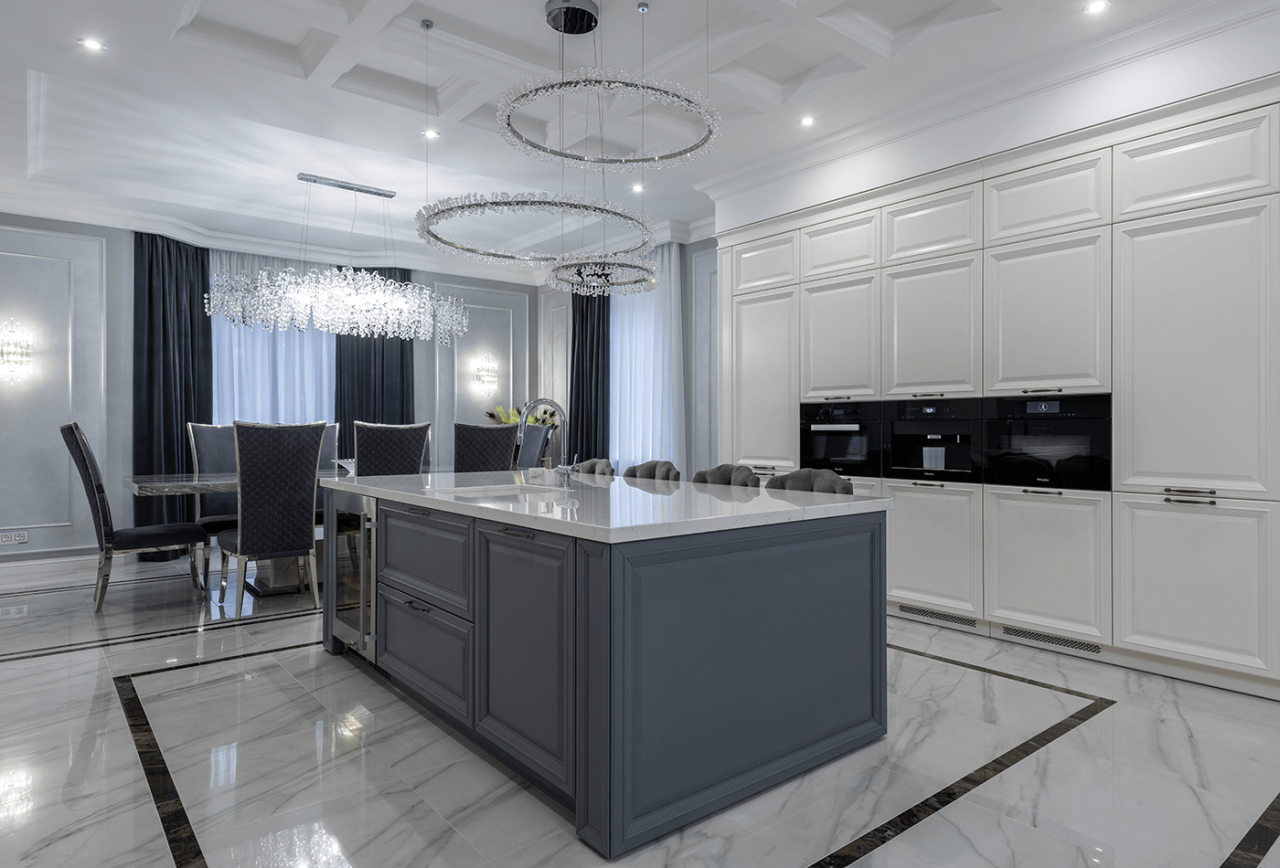
Source: dropinblog.net
Seeing is believing, and when it comes to choosing kitchen worktops, visual examples can be incredibly helpful. The right worktop can completely transform the look and feel of your kitchen, impacting everything from its overall style to its functionality. Let’s explore some examples to illustrate the possibilities.
Modern Kitchen with Sleek Quartz Worktop
Imagine a modern kitchen bathed in natural light. The cabinetry is a crisp, minimalist white, creating a clean and airy atmosphere. The backsplash is a subtle, textured grey tile, providing a pleasing contrast without being overwhelming. The star of the show, however, is the quartz worktop. It’s a stunning, deep grey with subtle veining that mimics the look of natural stone, but with the added benefit of being incredibly durable and easy to maintain.
The quartz’s polished finish reflects the light beautifully, adding to the kitchen’s sense of spaciousness and sophistication. The overall effect is one of sleek elegance and understated luxury. The cool grey of the quartz complements the white cabinets perfectly, creating a balanced and harmonious palette. The texture is smooth and cool to the touch, adding to the modern, minimalist feel.
Rustic Kitchen with Wooden Worktop
In stark contrast to the modern aesthetic, picture a rustic kitchen brimming with warmth and character. The cabinetry is a rich, dark wood, possibly reclaimed or with a distressed finish, adding to the aged, lived-in feel. The walls are painted a warm, creamy white, enhancing the natural wood tones. The worktop is the heart of this kitchen, a thick slab of butcher block maple.
The wood grain is prominent, with variations in colour from light golden hues to deeper amber tones. The texture is undeniably rustic, with the natural knots and variations in the wood adding to its charm. The worktop’s warmth complements the dark wood cabinets, creating a cozy and inviting atmosphere. The overall feel is one of comfortable, lived-in elegance, perfect for a family home.
Choosing the best kitchen worktops for UK homes involves considering durability and style. A key element is the cabinetry, and to get the best results, you might want to check out the top rated German kitchen cabinet manufacturers and their styles for inspiration. Their designs often complement a wide range of worktop materials, helping you create a truly stunning kitchen.
Ultimately, the perfect worktop choice depends on your personal preferences and budget.
The slightly uneven surface of the wood adds to the rustic charm, offering a tactile experience that is both appealing and functional.
Contemporary Kitchen with Granite Worktop
This kitchen design blends contemporary style with the timeless appeal of natural stone. The cabinetry is a sophisticated shade of dark grey, creating a sense of depth and drama. The walls are a neutral off-white, allowing the other elements of the design to shine. The granite worktop is a dramatic, dark grey with flecks of white and black, adding visual interest and texture.
The polished finish of the granite reflects the light, creating a sense of elegance and sophistication. The granite’s natural veining adds a unique character to the worktop, making each piece one-of-a-kind. The overall aesthetic is refined and contemporary, with the granite worktop providing a luxurious and durable focal point. The colour palette is sophisticated and cohesive, creating a calm and inviting atmosphere.
Sustainability Considerations
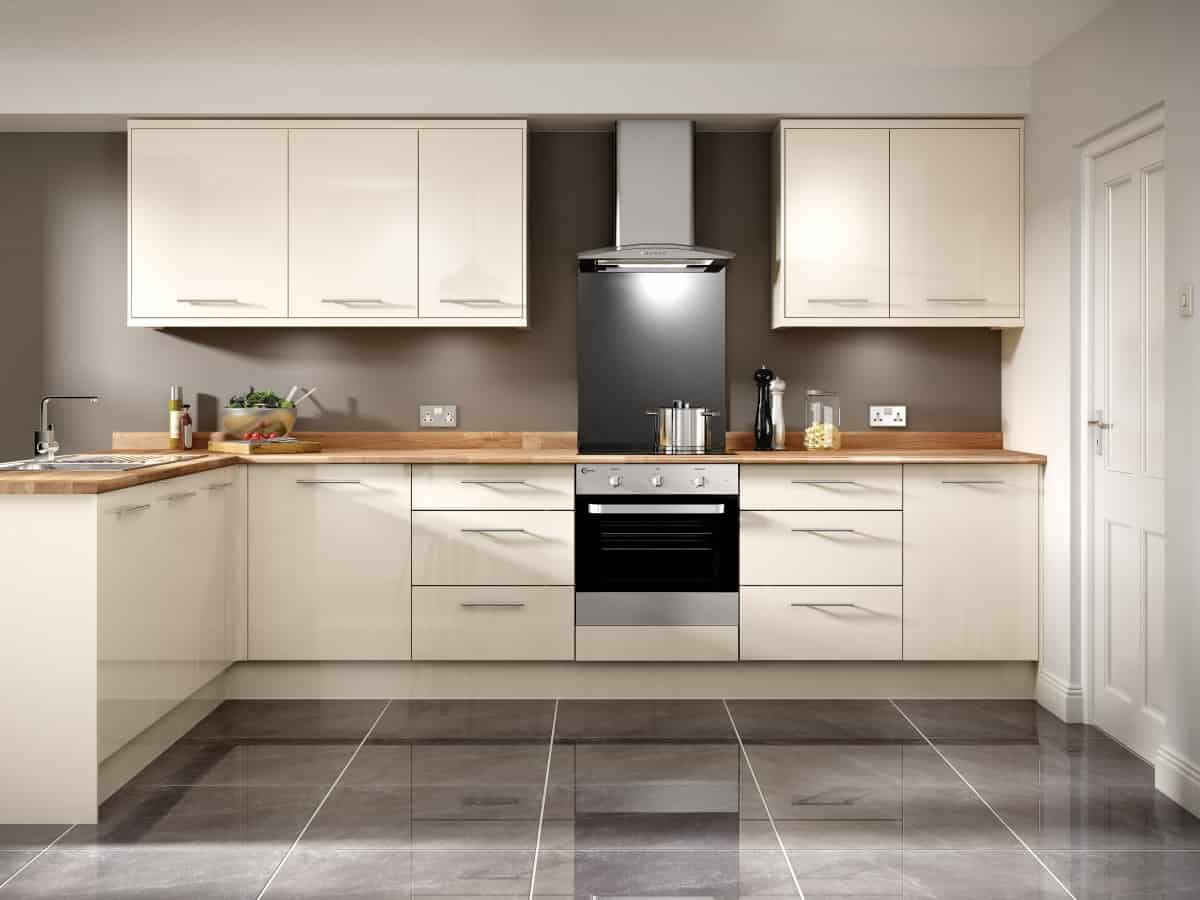
Source: thedesignsheppard.com
Choosing kitchen worktops involves more than just aesthetics and practicality; it also has significant environmental implications. The entire lifecycle of a worktop – from material sourcing and manufacturing to its eventual disposal – contributes to its overall environmental footprint. Understanding these impacts allows for more informed and sustainable choices.The environmental impact of different worktop materials varies considerably. For example, solid wood worktops, while often perceived as a natural and sustainable choice, can have a significant carbon footprint depending on the sourcing of the timber.
Unsustainable forestry practices can lead to deforestation and habitat loss. Similarly, stone worktops, such as granite and marble, require energy-intensive quarrying and transportation processes, resulting in substantial carbon emissions. Engineered stone, often containing resin and aggregates, also raises concerns about the environmental impact of manufacturing and disposal. Laminate worktops, while generally less expensive, often use non-renewable resources in their production and are not easily recyclable.
Recycled materials and sustainable manufacturing practices are becoming increasingly important factors in the selection of environmentally responsible worktops.
Environmental Impact of Different Worktop Materials
The sourcing, manufacturing, and disposal of worktop materials all contribute to their environmental impact. Sourcing materials responsibly, such as using sustainably harvested wood or recycled materials, significantly reduces the environmental footprint. Manufacturing processes vary greatly in their energy consumption and waste generation. For instance, the production of engineered stone often involves significant energy use and the release of volatile organic compounds (VOCs).
Finally, the disposal of worktops also presents challenges. Some materials are more easily recycled or repurposed than others. For example, solid wood can be reused or recycled, while some engineered stones may end up in landfills. Choosing durable, long-lasting materials reduces the frequency of replacements, minimizing the overall environmental impact over the worktop’s lifespan.
Recycled and Sustainable Worktop Options in the UK
The UK market is seeing a growing availability of recycled and sustainable worktop options. Recycled glass and paper aggregates are increasingly used in the manufacturing of composite worktops, reducing reliance on virgin materials. Post-consumer recycled plastic is also being incorporated into some worktop compositions. Furthermore, suppliers are increasingly focusing on sourcing materials from certified sustainable sources, such as forests managed according to responsible forestry practices.
Consumers can actively seek out worktops with certifications like the Forest Stewardship Council (FSC) label for wood-based materials, indicating responsible forestry practices. This growing market segment reflects a shift towards greater environmental awareness within the kitchen industry.
Long-Term Environmental Benefits of Durable and Low-Maintenance Worktops
Investing in durable and low-maintenance worktops offers significant long-term environmental benefits. A worktop that lasts for many years reduces the need for replacements, minimizing the environmental impact associated with manufacturing, transportation, and disposal of new worktops. Low-maintenance materials require less cleaning and repair, reducing the use of cleaning products and the generation of waste. For example, a quartz worktop, known for its durability and resistance to staining and scratching, requires minimal maintenance compared to a more delicate material like natural stone.
Choosing the best kitchen worktops for UK homes involves considering durability and style. If you’re on a budget, however, you might explore more affordable options like buying a used kitchen; for insights into this, check out these tips for buying a used kitchen in Germany , which could offer valuable advice even if you’re staying in the UK.
Ultimately, the ideal worktop depends on your individual needs and preferences, whether it’s sourced new or pre-owned.
This longevity translates directly into a reduced environmental footprint over the worktop’s lifetime. Choosing a durable worktop is a sustainable choice that benefits both the environment and the homeowner.
Summary
Ultimately, selecting the best kitchen worktops for your UK home involves a careful balance of aesthetics, practicality, and budget. By considering the factors discussed – material properties, lifestyle needs, and long-term maintenance – you can confidently choose a worktop that enhances your kitchen’s beauty and functionality for years to come. Remember to factor in installation costs and explore potential cost-saving strategies without compromising quality.
Happy renovating!
FAQs
What’s the average lifespan of different kitchen worktops?
Lifespans vary greatly depending on material and maintenance. Laminate might last 10-15 years, while granite and quartz can easily last 20+ years with proper care.
Can I install kitchen worktops myself?
While possible for some materials like laminate, professional installation is highly recommended, especially for more complex materials like granite or quartz. Improper installation can lead to damage or void warranties.
How much should I budget for worktop sealant?
The cost of sealant depends on the material and size of your worktops. Factor in around £50-£150 for most projects, but always check with your supplier for accurate estimates.
Are there eco-friendly worktop options?
Yes! Consider recycled materials or worktops made from sustainably sourced wood. Look for certifications like FSC (Forest Stewardship Council) to ensure responsible sourcing.
What’s the best way to clean different worktop materials?
Avoid harsh chemicals. Generally, a mild soapy solution and a soft cloth are sufficient. Always refer to the manufacturer’s cleaning instructions for your specific material.


